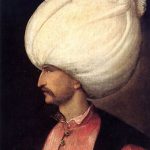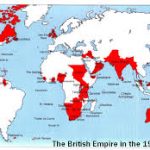The Hohenstaufen dynasty was named after the castle of Staufen (long ruined) in north-eastern Swabia. From 1338 to 1254 its leader were crowned as Holy Roman Emperor, beginning with Conrad III and finishing with Conrad IV, but the dynasty reached its apogee with Frederick I known as Barbarossa (12th century) and Frederick II (13th century). They were kings of a small region then called Germany, and of Sicily as well. Their period is best known for developing courtly culture and some chivalry.
Hohenstaufen:
1138 – 1152 Conrad III
1152 – 1190 Frederick I (Barbarossa)
1190 – 1197 Henry VI
1198 – 1208 Philip (of Swabia)
1198 – 1214 Otto IV (there seem to have been TWO Holy Roman Emperors)
1215 – 1250 Frederick II
1250 – 1254 Conrad IV
Hohenzollern:
Electors of Brandenburg
1417 – 1440 Frederick I
1440 – 1470 Frederick II
1470 – 1486 Albert Achilles
1486 – 1499 John Cicero
1499 – 1535 Joachim I
1435 – 1471 Joachim II
1571 – 1498 John George
1598 – 1608 Joachim Frederick
1608 – 1619 John Sigismund
1619 – 1640 George William
1640 – 1688 Frederick William (The Great Elector)
Kings of Prussia
1701 – 1713 Frederick I (but as Elector Brandenberg Frederick III 1688 – 1713)
1713 – 1740 Frederick William I
1740 – 1786 Frederick II (The Great)
1786 – 1797 Frederick William II
1797 – 1840 Frederick William III
1840 – 1861 Frederick William IV
Emperors of Germany
1871 – 1888 William I (also King of Prussia 1861 – 1888)
1888 Frederick III
1888 – 1918 William II (Wilhelm II the Kaiser, which simply means Caesar)
The Hohenzollern Dynasty ruled Brandenberg and Prussia from 1415 to 1918 – 503 years; and Imperial Germany from 1871 to 1918 – 47 years. They surfaced in Swabia in the ninth century, one branch of the family becoming Burgraves of Nuremberg in 1415. Swinging safely through the Thirty Years War (q.v.) the Hohenzollerns followed a steady and controlled policy of state expansion, thus creating long-lasting rivalry with the Habsburgs (q.v.). Von Bismarck (q.v.) ensured they they emerged with the imperial title in 1871 through William I. Then Hohenzollern (or Prussian) militarism ruined the dynasty via The Great War (1914 – 1918). The last Emperor, William or Wilhelm II was forced to abdicate by allied and American presidential pressure before the Versailles Treaty.









Leave A Comment